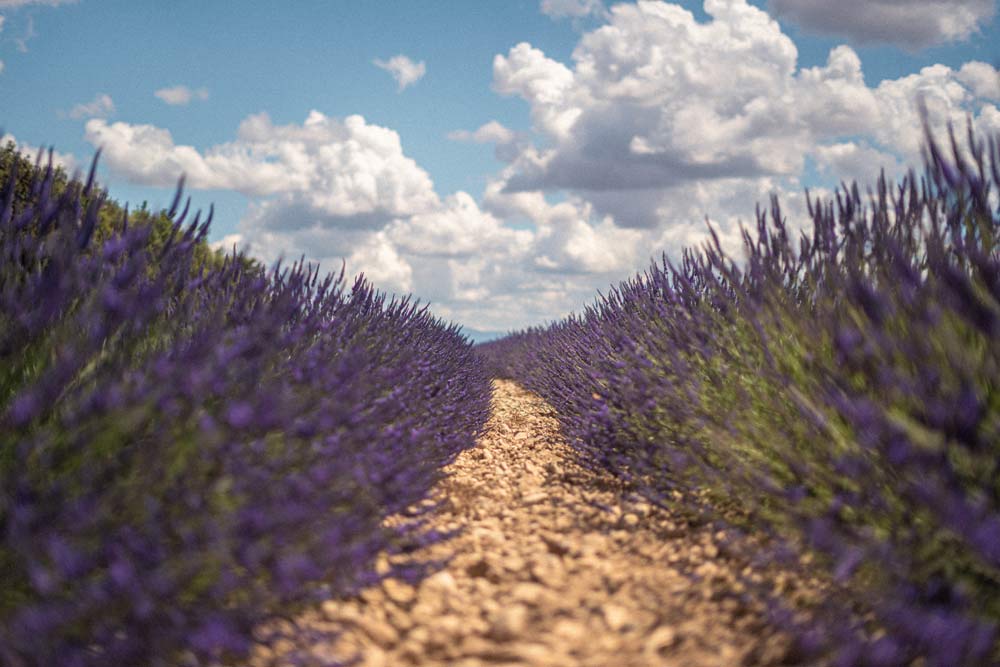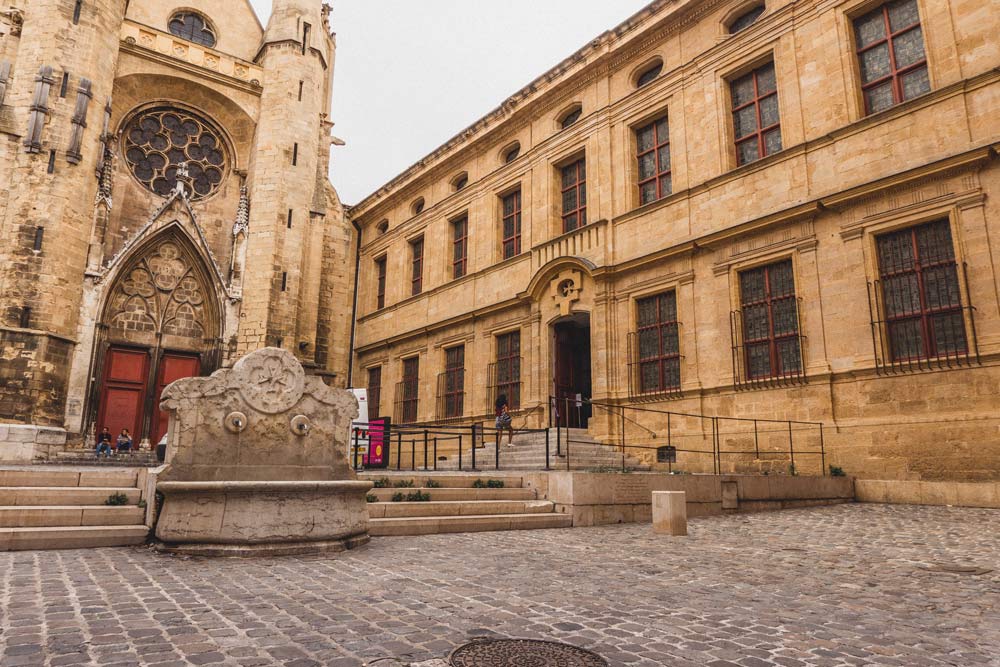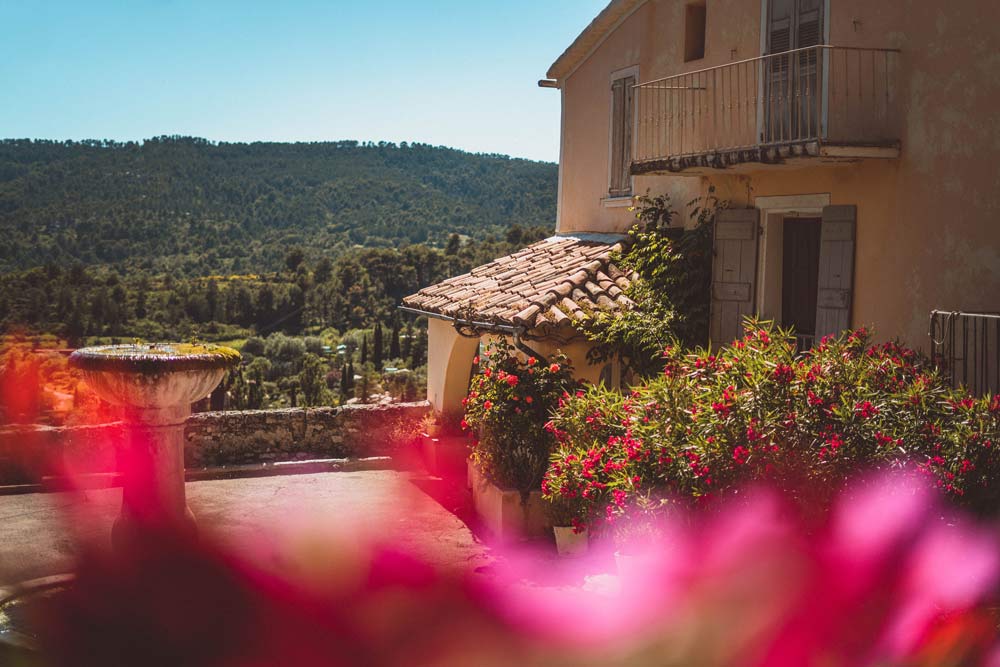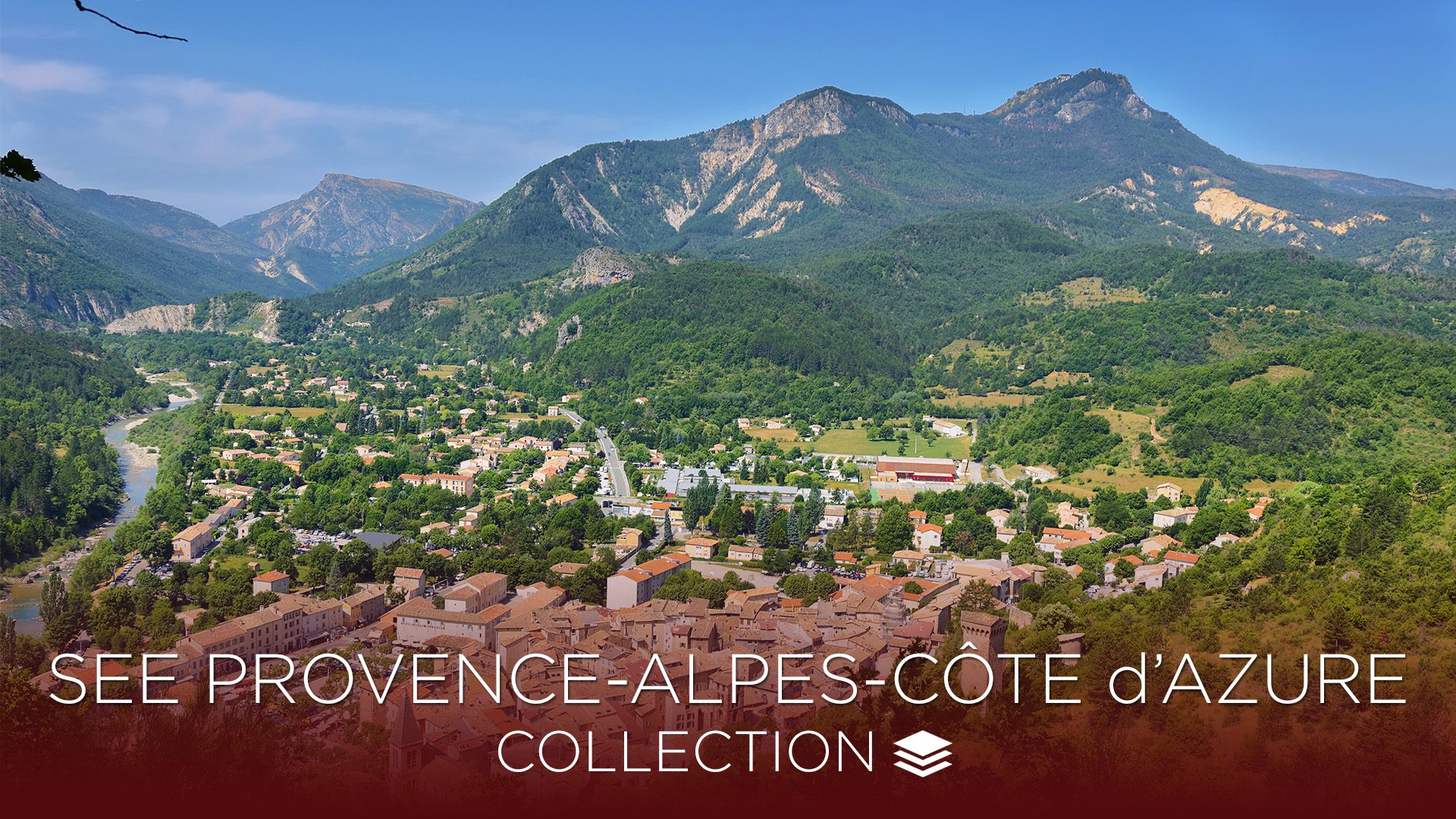
Provence-Alpes-Côte d’Azur. The very name conjures up images of swirling lavender fields, medieval hamlets, snow-capped mountain peaks, and an aquamarine blue sea. Well-loved by celebrities, royalty, and yours truly, it’s a must-see region while in southeastern France. Here are some of the can’t miss destinations in the area, as well as some hidden gems which are a little more off the beaten path.
Where is Provence-Alpes-Côte d'Azur?
The region is split into several distinctive parts, all of which were once administrative regions in their own rights in the decades gone by. While Provence is firmly located in the center south of France, the Côte d’Azur is situated in the southeast, between the Mediterranean Sea and the border with Italy.
Some of the largest towns and cities in the region include Marseille (which is one of the largest cities in France, second only to Paris), Avignon (home of seven successive popes in the 14th-century), and Nice (the glitzy, glittery Belle Epoque city made famous as a beach resort at the turn of the 20th-century).
What is Provence-Alpes-Côte d'Azur known for?
As mentioned, the region was previously split into several smaller sub-regions, all of which maintain their own cultural identity to this day. While the glittering French Riviera (Côte d’Azur) is most famous for its colorful towns, iconic beaches, and for being the preferred getaway for many a celebrity, Provence is distinctly different.
The region of Provence itself is split into several areas; there’s the lower foothills of the Alps, i.e. the hinterland, and the coast, which is undoubtedly less popular than that of the French Riviera but merits a mention nonetheless.
Must-sees and hidden gems of Provence-Alpes-Côte d'Azur
Avignon
With easy train links to Paris, London, and beyond, the first taste of Provence-Alpes-Côte d’Azur that many visitors to this region get is by stepping off the TGV in Avignon or flying into the city’s airport. A walled city fit for a king; the name Avignon comes from the Latin name Avenio which means the windy city. And while Avignon is by no stretch of the imagination a hidden gem, it holds many secrets within its well-preserved 8-meter-high walls.
As well as vestiges of its Roman past in the form of crumbling walls (there is a particularly interesting section alongside the 5-star Hôtel La Mirande), Avignon boasts its own vineyard and even a church complete with medieval cloisters. The city serves as a backdrop for the Murder in: Avignon episode.
Most visitors head to Avignon to see both the Papal Palace and the ruins of the Pont d’Avignon (bridge of Avignon). The bridge of Avignon (known in French as Le Pont Saint Benezet) was constructed in the 12th-century, though was largely washed away by floods before being abandoned in the 17th-century.
Today, just a part of the famous bridge remains and has inspired the iconic French nursery rhyme ‘Sur le Pont d’Avignon’. Meanwhile the Papal Palace, known as the Palais des Papes in French, was first established in the latter half of the 1200s. For a fee, visitors can now learn about the seven popes who relocated from Vatican City between 1309 and 1376.
Aix-en-Provence
Drive an hour southeast of Avignon and you’ll soon come across Aix-en-Provence. You may well recognize the city of a hundred fountains thanks to the works of Paul Cézanne, a post-impressionist artist who called the city home, and whose trail can be followed to this day with a helpful leaflet that can be acquired from the tourism office.
The buttery stone buildings of Aix-en-Provence shine even brighter under the brilliant Provençal sun and are a great place to soak up a little of local life. After all, Aix boasts some of the best local markets in the region. Almost every day of the week (depending on the season), sellers tout their wares at the traditional Provençal market which sells everything from local lavender products to freshly picked fruits and vegetables.
Menton
Moving towards the Provence-Alpes-Côte d’Azur coastline, the pearl of the French Riviera is the last town before the border with Italy. With its close proximity to the city state of Monaco, Menton is a pastel hued dream. And while a little more popular these days thanks to the ‘Instagrammability’ of the place, Menton still merits a visit.
While I would personally stay at least a night to see everything worth visiting, Menton is easy to reach via train from Nice or Cannes, making it the perfect afternoon escape. The French town’s highest point is also its cemetery (the cemetery of the Old Château), which in turn boasts unparalleled views of the town below and the aquamarine sea beyond. Other highlights of Menton include wandering around the port and snapping a photo of the iconic houses from the panoramic viewpoint at the end of Quai Impératrice Eugénie.
La Ciotat
Heading further along the coastline and back into France, visitors will reach La Ciotat, a sleepy little fishing village. As featured in the episode Murder In: La Ciotat, this little Provençal settlement retains its fishing roots to this day and catch of the day is a daily occurrence on the small restaurants which line the port area.
Thanks to the small and compact nature of La Ciotat, it can easily be explored over the course of a few hours, though enjoying a glass of crisp local rosé on one of the little terraces in town is never a bad idea. This pocket-sized gem is still somewhat undiscovered in comparison with the nearby port town of Cassis and is alleged to have been the birthplace of the game pétanque, a Provençal version of boules.
Saint Paul de Vence
The charming town of Saint Paul de Vence sits perched high on a hilltop, a far cry from the wide boulevards of Nice or the sun-kissed houses of Cannes. Made famous by its status as one of the most beautiful villages in France, the cemetery of the town is the final resting place of the artist Marc Chagall. Meanwhile, Pablo Picasso, Henri Matisse and Jean-Michel Folon all visited the town at one point or another.
Today, one of the greatest charms of Saint Paul de Vence is simply to stroll around the cobbled lanes and allow the town to reveal itself to you. As well as soaking up the historic architecture, visitors can enter the church, stay in the auberge of La Colombe d’Or, and admire the artwork housed within the Maeght Foundation.
Moustiers Sainte Marie
Yet another incredible town in Provence-Alpes-Côte d’Azur which is simply bursting with character is Moustiers-Sainte-Marie. This town is best-known for its faïence pottery, a handmade and hand painted product which is sold in a number of boutiques in town and makes for the perfect gift or souvenir from your trip.
Most of the town is pedestrianized cobbled lanes, meaning that the best way to get to know Moustiers is simply by strolling around, allowing the shuttered houses and pastel hued homes to reveal themselves to you.
Those who are looking for a bird’s eye perspective of the city should climb up to Chapelle Notre-Dame-de-Beauvoir, a small hermitage which presides above the rest of the town. And for anyone with a sweet tooth, the lavender ice cream at l’Étoile Givrée serves up one of the most delicious sweets I’ve ever been lucky enough to try.
Nearby, the Gorges du Verdon is a river canyon that has been carved out over the millennia and offers up a range of adventure activities including rock climbing, kayaking, and hiking. Hands down, one of the best activities to enjoy during your time at the Gorges du Verdon is to rent a boat (no boat permit required boats are available at ALIZE ELECTRONIC LOCATION, bateaux électriques) and head out on the Lac Sainte-Croix for half a day. Sunbathe on the boat, take a picnic to enjoy on deck, and swim in the crystal cool water, all the while enjoying the rural Provençal landscape.
Villages of the Luberon
Moving further inland once more from Saint-Paul-de-Vence, the Villages of the Luberon lie nestled in the Provençal hinterland. Many of the little hamlets and haphazard villages in this part of Provence are characterized by their ‘village perché’ status. What this essentially means is that the perched villages are built atop of the hillside.
Typically, these villages would have once been fortified, with a château, or, at the very least, a chapel, at the top. Today, they are delightful little mazes of hole-in-the-wall eateries, crumbling ramparts, and a laid-back way of life.
Those looking to get a little off the beaten path when it comes to the Luberon villages would do well by heading to Manosque, a speck of a settlement with a smattering of bars and unparalleled views over the Provençal countryside.
A village which is a little more famous than Manosque is that of Gordes, thanks to the spectacular vista of the village which can be seen from along route de Cavaillon. Arrive at sunrise or sunset to capture the village with golden hued skies.
Those wishing to refuel with a drink or light bite to eat in Gordes can enjoy one of the most spectacular spots in Provence from the terrace of the hotel Airelles Gordes, La Bastide. Though the refreshments are a little on the pricey side, the view is more than worth the price tag.
Just a short drive away, the Abbey of Sénanque is a 12th-century Cistercian Abbey which can be visited for a small fee and whose late June blooming lavender fields sway around the Romanesque buildings in a secluded wooded valley.
Fontaine de Vaucluse
As the crow flies, the town of Fontaine de Vaucluse is just a few kilometers away from the Abbey of Sénanque, though in reality it takes a little longer to reach on account of the winding roads and mountainous scenery of this part of Provence-Alpes-Côte d’Azur. Somewhat less discovered than many of the other towns included within this guide, the town has been inhabited since Roman times.
The town’s name Fontaine de Vaucluse originated in two parts; while ‘Vaucluse’ comes from the Latin for ‘wooded valley,’ ‘Fontaine de’ was added in the middle of the 20th-century and signifies that the town is home to the source of the River Sorgue. Unfortunately, the source is a little underwhelming during the summer months, though this doesn’t mean that the town should be skipped on a trip to Provence.
Highlights of the town include its ease of access to water sports activities (be sure to go on a kayak tour with Kayak Vert) and its many eateries. Hands down, the best eatery in town is Restaurant Philip. This prestigious dining venue has a terrace perched alongside the River Sorgue and counts Winston Churchill among its many illustrious clients.
A final note
If you want sun, sea, and some of the most breathtaking vistas in Europe, Provence-Alpes-Côte d’Azur is a must-visit. From adventure activities such as kayaking and rock climbing to exploring medieval towns that have been plucked straight out of a history book, there’s no shortage of activities for even the most discerning of travelers. And while this guide has given just a glimpse of the culture offered, I do hope that it entices you to learn more about the region. In the meantime, don’t hesitate to check out the following episodes of Murder In… and Perfect Murders set in Provence-Alpes- Côte d’Azur. All now streaming on MHz Choice.
Series featuring Provence-Alpes-Côte d'Azur on MHz Choice
About the Author
Sophie Nadeau is a British Canadian travel writer currently residing in Paris with her French husband. She has been lucky enough to have lived in several different countries and has run her travel blog, solosophie.com, full time since 2017. With a particular interest in history and culture (especially if there’s a château visit involved), she spends her spare time painting, reading, cooking up vegetarian recipes, spending too much looking up dog photos online, and researching new hidden gems to discover.












